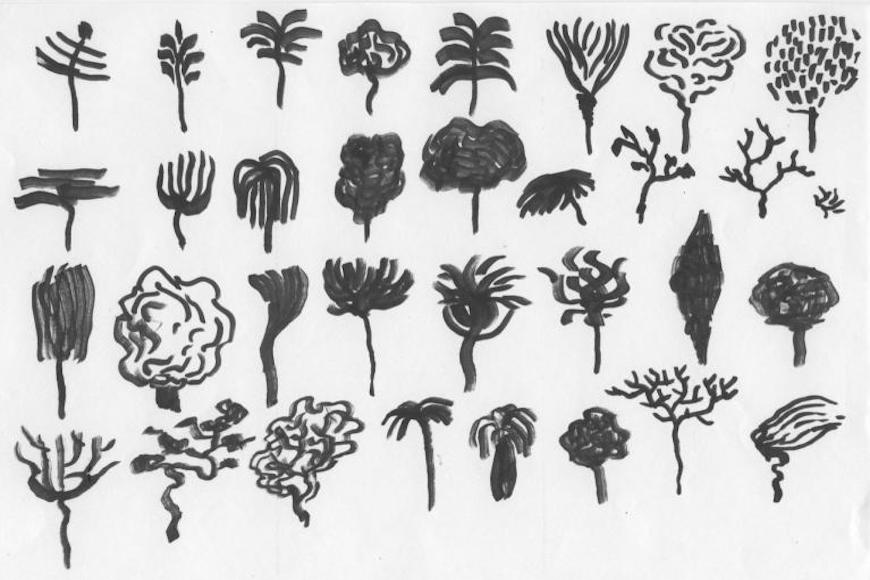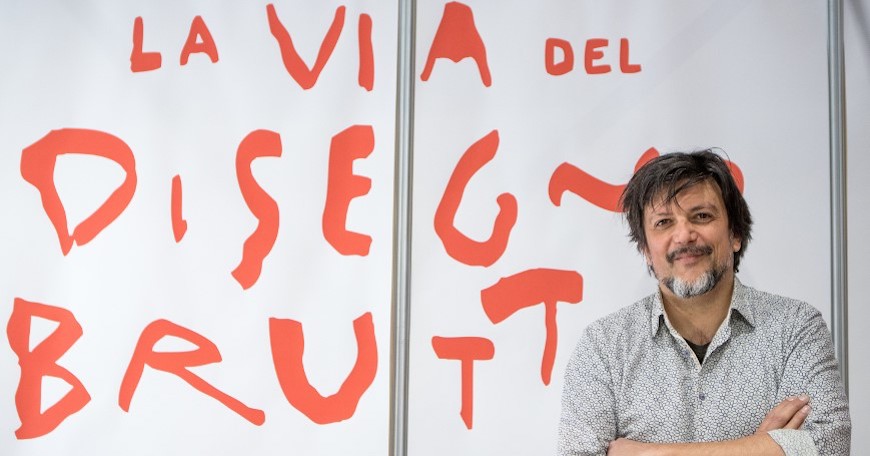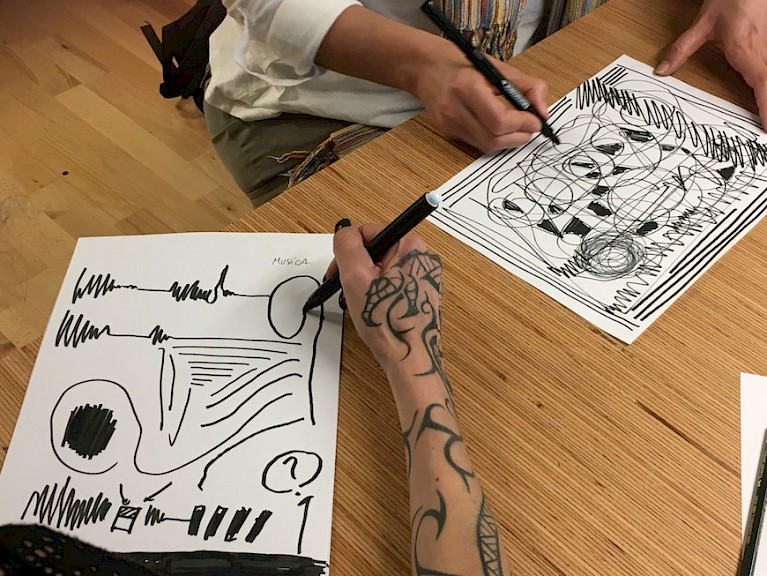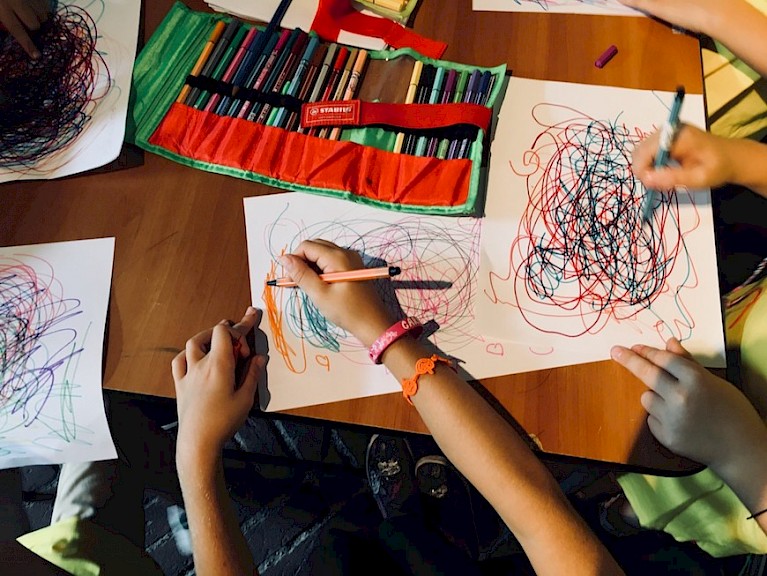
The act of painting, drawing or otherwise creating art is generally considered as an activity for either children or professionals. Except at school and in recreational activities forchildren, art is experienced as exclusively for artists. Both cause and consequence of this phenomenon is the tendency to consider the scientific/rational method as the only effective way to think. For parents, drawing often becomes a way to keep their children occupied while they are busy with chores. In the workplace, drawing seems to be considered a waste of time and energy. However, this is detrimental both to creativity and improving lateral thinking, which helps our brain to adapt to situations and to respond with different approaches to different stimuli or problems.
We spoke with Alessandro Bonaccorsi, illustrator, visual designer and creator of the project “Disegno Brutto” (Lit."Ugly Drawing"). His mission is to bring drawing back into offices and workplaces, into the homes and lives of adults, to help them codify and imagine reality in a different way and improve their skills.
Given that we no longer draw, how can we reintroduce the graphic sign as an everyday activity? The first step is getting rid of the assumption that a drawing must necessarily be "beautiful", and embrace a freer vision instead, which leaves no room for judgment. Evocative and of immediate comprehension in this respect is the name "Ugly Drawing" that Bonaccorsi has given to his project. As clearly expressed in the title of his latest book, it is in fact possible, if one changes perspective, to "work better by drawing badly".

For Bonaccorsi, it all started with graphic facilitation: "I started working as a facilitator almost by accident, in situations like congresses or conventions". The role of a graphic facilitator is to translate or "illustrate" with simple and spontaneous iconography what a speaker is saying, as they are saying it. "When you are working live, you don't need to make a perfect drawing," Bonaccorsi explained, "and you realize that this drawing is much more appreciated, even if it's done badly or quickly, but live and directly for the client, making him witness the creative process, than an illustration that you would normally work on for a week or more." Hence the idea that you could create something "ugly", but that can still be appreciated for its meaning and usefulness, by using symbols and simple lines. Drawing is a very practical art that can bring many benefits, even unexpected ones. However, we must "free ourselves from the conviction that drawing is just what we were taught in school."
Drawing is "first of all a liberating act," and leads to "looking at the world from a different point of view," creating, even in companies, a "change of mindset." According to Bonaccorsi, "drawing quickly and maybe even badly will save you time, improve your ability to plan, to predict, allow you to have a clearer vision of things and help you solve problems, inspire you and stimulate your creativity." We are used to thinking only through writing and words, but "reasoning by drawing is one of the best things we can do to stimulate imagination and creativity" (Working Better by Drawing Badly, 2020). Once we are free of judgment, then, we can combine drawing, which represents our more instinctual and irrational side, with our usual way of thinking.

The Ugly Drawing courses, which the author has been organizing since 2017 and have been widely apprecciated, teach how to "find oneself after getting lost" and "discover the magic of drawing" by actually doing a "re-education to drawing". With very simple tools, such as a piece of paper and a black marker, Bonaccorsi begins to push adults toward this newfound freedom. Colors are included in the philosophy but introduced later: "the black mark has its own power, a sort of hypnosis". Digital tools? Why not! A graphics tablet or a simple tablet can be used for the same purpose. However, according to Bonacciosi, tools that are advanced or sophisticated enough to give full satisfaction are still missing. Those that do exist are generally not available on a large scale.

"It is always said that when you draw you become a child again," but that's actually not true: "the feelings you have as an adult are very different." As children, drawing is a psychomotor act; later on, in school, it becomes a performance, and at that point, "children want to draw better and better," because "school does not suggest any other way of drawing other than looking at it as an art form.” After school, drawing disappears. There is a very stimulating meeting point in uniting the child's approach and the adult's to the act of drawing: "making children draw like adults, and adults draw like children". The key to this encounter, according to Bonaccorsi, is reversing roles: the child becomes the teacher. In fact, children have "a very different way of reasoning, in a certain sense more irrational." The adult, used to being in control, when drawing guided by a child finds himself "forced to let go," a skill that would be useful to reevaluate.
By pushing toward spontaneity and the freedom to create, Ugly Drawing can help us return art to its fundamental practical role in the dynamics of adult life, even the most productive ones.